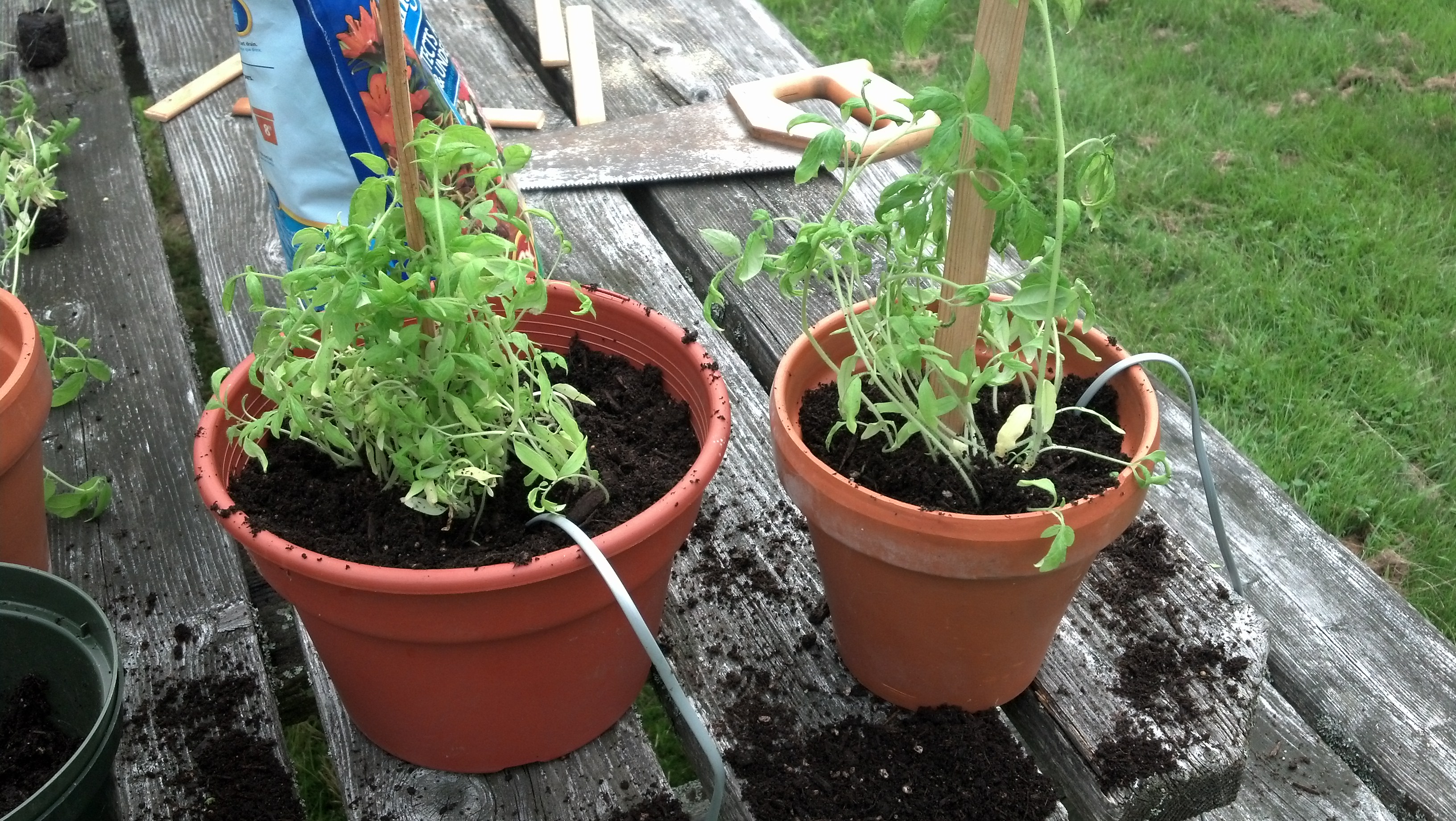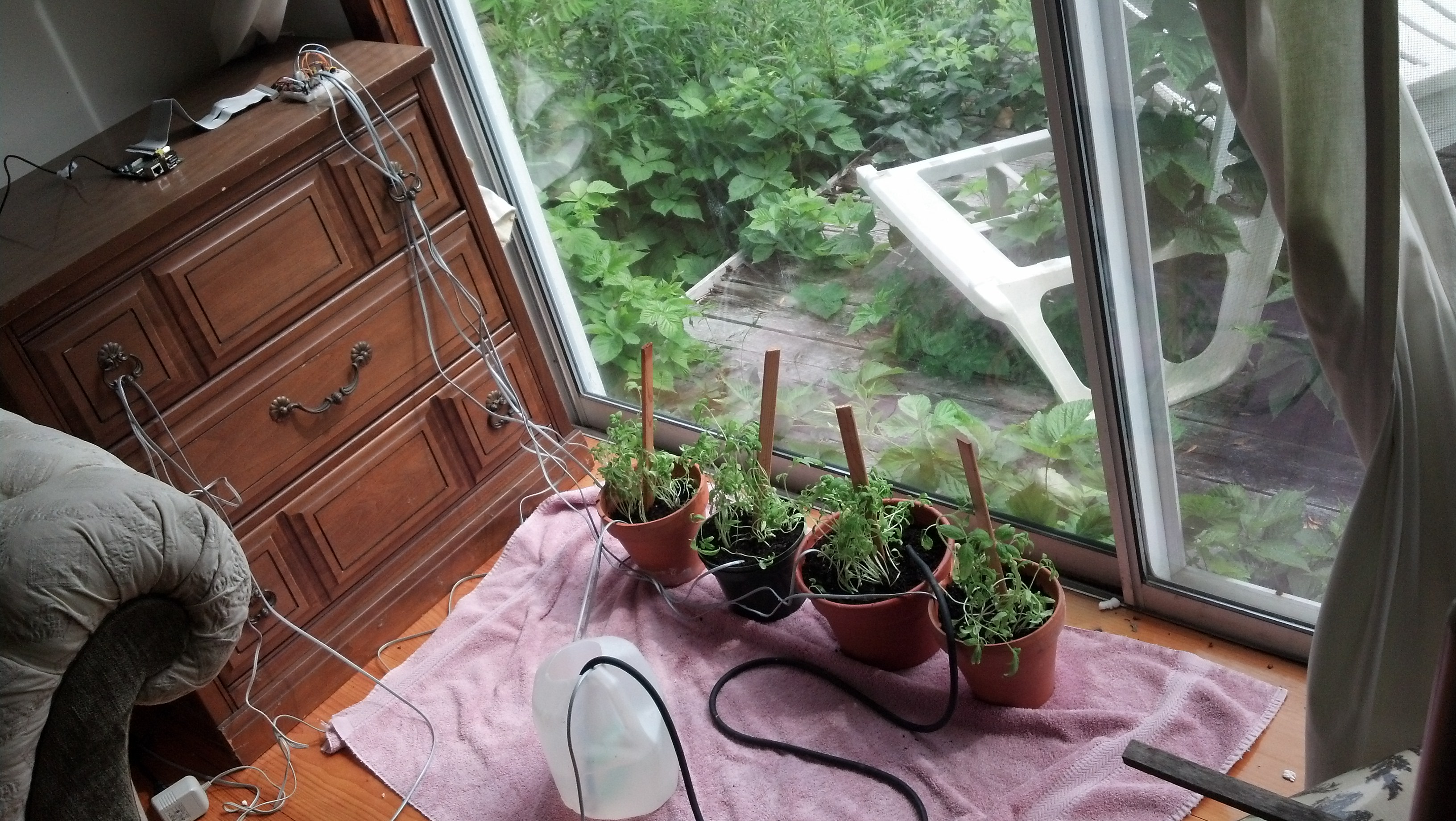Here’s a video:
So basically the program indexes every single file on the SD card and then starts a scheduled interval process to upload them every single upload to flickr every 20 seconds. From there, it creates a set and indexes all of the upload responses and then walks though that list and adds each photo to that list. Then it emails the set URL with some other data.
I had a lot of problems with the flickr API timing out, and solved this problem by using APscheduler (easily my favorite package). You can see a more in depth chronicling my struggle on my twitter account.
I really want this project to be polished so I probably won’t be done with it for a while. I want to like 3D print a really nice looking enclosure and use a lot of panel mount components.
Here’s the python script:
#GPIO setup
import RPi.GPIO as GPIO
GPIO.setmode(GPIO.BOARD)
in_flickr = 11
GPIO.setup(in_flickr, GPIO.IN)
in_hdd = 13
GPIO.setup(in_hdd, GPIO.IN)
button = 16
GPIO.setup(button, GPIO.IN)
flickr_LED = 3
GPIO.setup(flickr_LED, GPIO.OUT)
both_LED = 5
GPIO.setup(both_LED, GPIO.OUT)
hdd_LED = 7
GPIO.setup(hdd_LED, GPIO.OUT)
uploading_LED = 26
GPIO.setup(uploading_LED, GPIO.OUT)
ready_LED = 24
GPIO.setup(ready_LED, GPIO.OUT)
stat_LED = 22
GPIO.setup(stat_LED, GPIO.OUT)
import os
from apscheduler.scheduler import Scheduler
import logging
logging.basicConfig()
import time
#Flickr Setup
import flickrapi
api_key = ''
api_secret = ''
flickr = flickrapi.FlickrAPI(api_key, api_secret, format='json', cache=True)
(token, frob) = flickr.get_token_part_one(perms='write')
if not token: raw_input("Press ENTER after you authorized this program")
flickr.get_token_part_two((token, frob))
#email setup
import smtplib
def sd_walk():
global file_list
global file_number
global filename
global file_current
print '-Starting File Index'
for path, subdirs, files in os.walk(image_dir):
for filename in files:
if os.path.splitext(filename)[1].lower() in ('.jpg','jpeg'):
listfiles = os.path.join(path, filename)
file_list.insert(file_number,listfiles)
print '--File: ' + str(file_number+1) + ' Added To List: ' + str(listfiles)
file_number = file_number + 1
print '-Indexing Completed \n'
print '---Starting Upload'
def upload_file():
global file_list
global file_number
global filename
global listfiles
global file_current
if file_current == int(len(file_list)):
print '\n----All Files Dealt With...Terminating \n'
global scheduler
scheduler.shutdown(shutdown_threadpool=False)
else:
print '----Uploaing File: ' + str(file_current+1) + ' Of: ' + str(len(file_list)) + ' : ' + file_list[file_current]
upload_response = flickr.upload(filename = file_list[file_current], format='etree')
upload_ID = upload_response.find('photoid').text
print '------Uploaded - Photo ID: ' + upload_ID
id_list.insert(file_current,upload_ID)
file_current = file_current + 1
def flickr_upload():
global id_list
id_list = []
global file_list
file_list = []
global file_current
file_current = 0
global file_number
file_number = 0
sd_walk()
global scheduler
scheduler = Scheduler(standalone=True)
scheduler.add_interval_job(upload_file,seconds=20)
scheduler.start()
print '---Uploading completed - Adding Files To Set'
set_name = 'Uploaded At ' + time.strftime('%m-%d-%y_%H-%M-%S')
print '\n----Creating Set: ' + set_name
print '----Primary Photo: ' + id_list[0]
json_string = flickr.photosets_create(title=set_name, primary_photo_id=id_list[0])
global set_id
set_id = json_string.split('"')[5]
print '----Set Created: ' + set_id
print '----Adding Files To list'
global flickr_setno
flickr_setno = 0
global scheduler
scheduler = Scheduler(standalone=True)
scheduler.add_interval_job(flickr_addset,seconds=1)
scheduler.start()
print '---All Photos Added, Flickr Process Complete \n'
flickr_email(set_id,file_current,set_name)
def flickr_addset():
global id_list
global set_id
global flickr_setno
if flickr_setno == int(len(id_list)):
print '\n----All IDs Dealt With...Terminating \n'
global scheduler
scheduler.shutdown(shutdown_threadpool=False)
else:
flickr.photosets_addPhoto(photoset_id=set_id, photo_id=id_list[flickr_setno])
print '-----Photo: ' + str(flickr_setno+1) + ' Of ' + str(len(id_list)) + ' Added To Set: ' + str(set_id) + ' ID: ' + str(id_list[flickr_setno])
flickr_setno = flickr_setno + 1
def flickr_email(idd,total_files,name):
fromaddr = ''
toaddrs = ''
username = ''
password = ''
server = smtplib.SMTP('smtp.gmail.com:587')
server.ehlo()
server.starttls()
server.ehlo()
server.login(username,password)
print 'Sending Email'
SUBJECT = 'Your Photos Have Been Uploaded!'
TEXT = 'Hello!\n\nYou Uploaded a total of: ' + str(total_files) + '\nYour Set is Named: "' + str(name) + '" \nYou can View These Photos Here: \n\n http://www.flickr.com/photos/99154806@N04/sets/' + str(idd)
msg = 'Subject: %s\n\n%s' % (SUBJECT, TEXT)
server.sendmail(fromaddr, toaddrs, msg)
time.sleep(10)
server.quit
print 'Email Sent \n'
while 1:
GPIO.output(ready_LED, True)
GPIO.output(uploading_LED, False)
GPIO.output(stat_LED, False)
if GPIO.input(in_flickr):
#print "left"
GPIO.output(flickr_LED, True)
GPIO.output(both_LED, False)
GPIO.output(hdd_LED, False)
elif GPIO.input(in_hdd):
#print "right"
GPIO.output(flickr_LED, False)
GPIO.output(both_LED, False)
GPIO.output(hdd_LED, True)
else:
#print "mid"
GPIO.output(flickr_LED, False)
GPIO.output(both_LED, True)
GPIO.output(hdd_LED, False)
if GPIO.input(button):
GPIO.output(uploading_LED, True)
GPIO.output(ready_LED, False)
print '======Start====='
print 'Mounting SD'
time.sleep(1)
global image_dir
image_dir = '/mnt/SD/'
os.system('mount -t vfat /dev/sda1/ ' + image_dir)
print 'SD Mounted'
if GPIO.input(in_flickr):
flickr_upload()
print 'SD Unmouting'
time.sleep(10)
os.system('umount -t vfat /dev/sda1/ ' + image_dir)
print 'SD Unounted'
print '======End======'
GPIO.output(uploading_LED, False)
GPIO.output(ready_LED, True)
elif GPIO.input(in_hdd):
hdd_upload()
print 'SD Unmouting'
time.sleep(10)
os.system('umount -t vfat /dev/sda1/ ' + image_dir)
print 'SD Unounted'
print '======End======'
GPIO.output(uploading_LED, False)
GPIO.output(ready_LED, True)
else:
both_upload()
print 'SD Unmouting'
time.sleep(10)
os.system('umount -t vfat /dev/sda1/ ' + image_dir)
print 'SD Unounted'
print '======End======'
GPIO.output(uploading_LED, False)
GPIO.output(ready_LED, True)
Thanks for reading!






